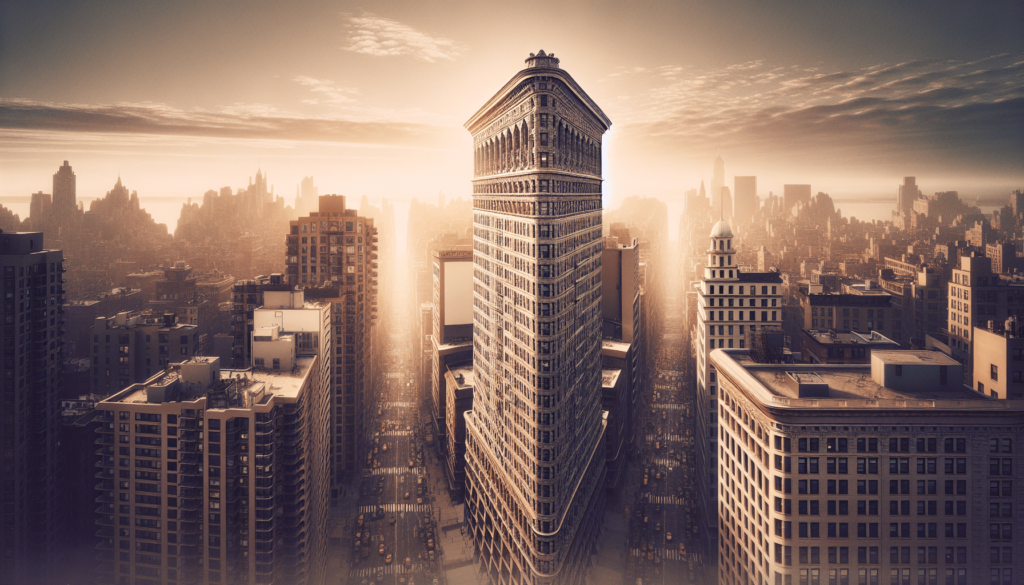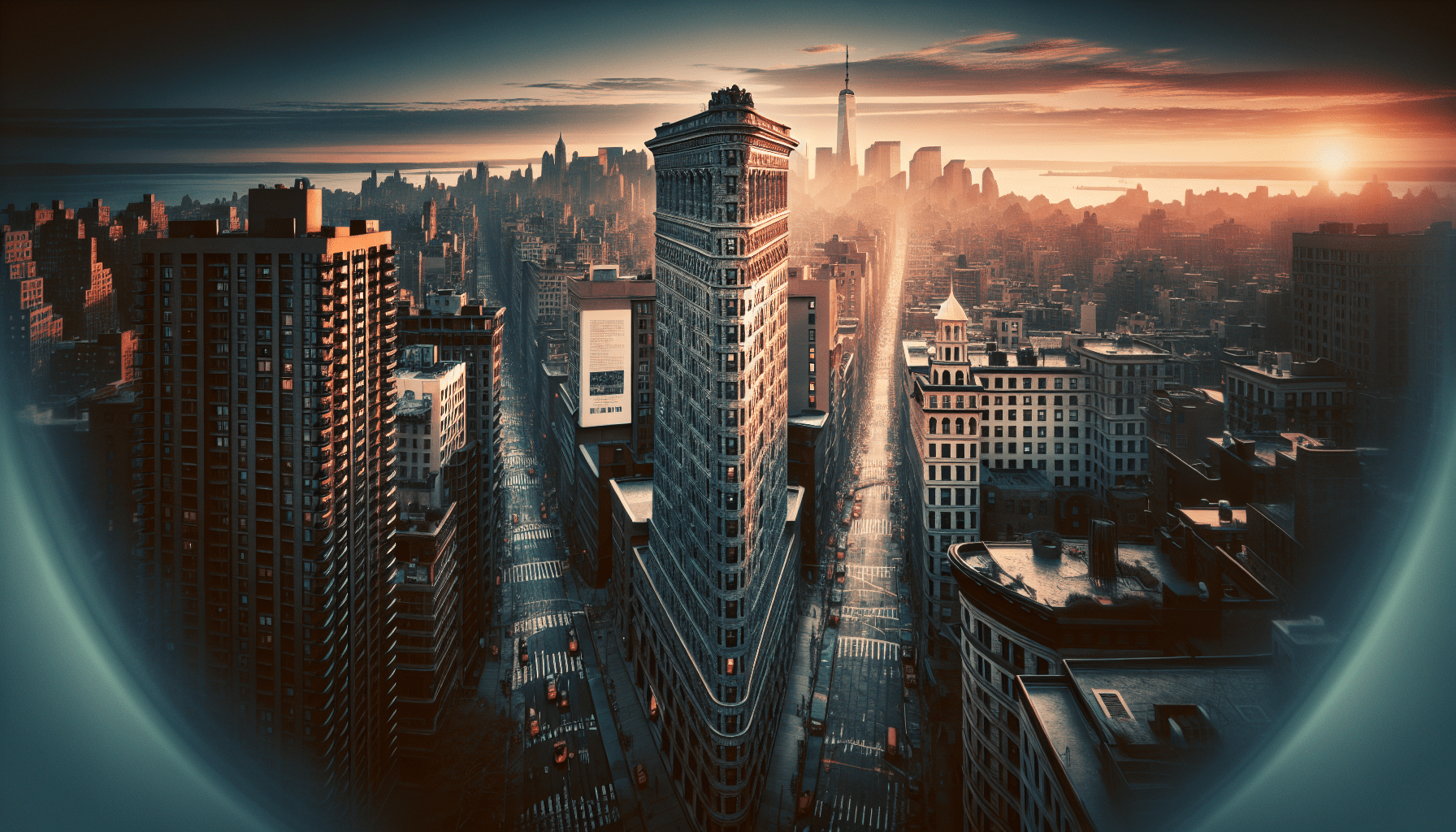BAGSMART 6 Set Compression Packing Cubes - Lightweight Travel Essentials, Durable Luggage Organizer
$35.89 (as of April 22, 2025 06:42 GMT +00:00 - More info)Intriguingly nestled in the bustling cityscape of New York City, the Flatiron Building stands as an iconic testament to architectural ingenuity and historical significance. Over the years, the triangular marvel has become a beloved landmark, captivating both locals and tourists alike. As we explore the captivating history and extraordinary architecture of the Flatiron Building, we embark on a journey that unveils the evolution of this architectural masterpiece and its enduring impact on the cityscape of the Big Apple.
History
The Construction of the Flatiron Building
The iconic Flatiron Building, located in the heart of Manhattan, holds a rich history that dates back to the early 20th century. Its construction began in 1901 and was completed in 1902, making it a testament to the architectural marvels of its time. This triangular-shaped building was designed by Daniel Burnham and Frederick Dinkelberg, who created a masterpiece that defied conventional architectural norms.
The Design and Architecture of the Flatiron Building
The design and architecture of the Flatiron Building are truly remarkable. With its distinctive triangular shape, the building flawlessly utilizes the irregular plot of land on which it stands. The steel skeleton framing, a revolutionary construction technique at the time, allowed for the creation of tall and slender structures. The Flatiron Building showcases the Beaux-Arts style, characterized by its ornate detailing, grand entrances, and neoclassical elements. It stands as a testament to the ingenuity of its architects and the advances in architectural design during the early 20th century.
Location and Significance
Situated in the Heart of Manhattan
The Flatiron Building’s location in the heart of Manhattan is strategic and holds significant historical and cultural importance. Positioned at the intersection of Fifth Avenue and Broadway, with East 22nd Street running along its narrow tip, the building serves as a gateway to various neighborhoods and districts in the city. This prime location has made the Flatiron Building a prominent landmark and symbol of New York City.
Iconic Status and Cultural Significance
The Flatiron Building has attained legendary status and significant cultural significance over the years. Its distinctive architecture and prominent presence have made it an iconic symbol of New York City. The striking silhouette of the Flatiron Building has been featured in countless photographs, films, and paintings, capturing the imagination of artists and visitors from around the world. As a beloved symbol of the city’s progress and modernity, the Flatiron Building has become ingrained in the cultural fabric of New York.

Looking for Sightseeing Tours?
Early 20th Century
An Architectural Marvel of its Time
During the early 20th century, the Flatiron Building was hailed as an architectural marvel. Its unconventional design and innovative construction techniques showcased the advancements in technology and engineering of the era. The building’s steel frame allowed for the creation of open and spacious interiors, a departure from the heavy masonry structures prevalent at the time. The Flatiron Building stood as a testament to the creative possibilities of architectural design.
Daily Life within and around the Flatiron Building
As the Flatiron Building stood tall amidst the bustling streets of Manhattan, daily life within and around the building thrived. The ground floor of the building housed numerous businesses, including retail stores, cafes, and restaurants. The upper floors were occupied by various offices, attracting businesses from different industries. The flurry of activity around the building created a vibrant atmosphere, with people bustling in and out, making the Flatiron Building a hub of commerce and social interaction.
The Flatiron as a Symbol of Progress and Modernity
The Flatiron Building’s construction marked an era of progress and modernity in New York City. With its unique design and engineering triumph, the building represented the city’s determination to push boundaries and embrace innovation. Its towering presence served as a constant reminder of the rapid development and modernization of the early 20th century. The Flatiron Building became a beacon of New York’s aspirations and a symbol of the city’s status as a global leader.
Historical Events and Transformations
The Flatiron Building during World War I
World War I had a profound impact on the Flatiron Building and the city of New York as a whole. As the war engulfed the world, the Flatiron Building became a symbol of resilience and strength. It stood tall amidst the turmoil, a testament to the unwavering spirit of the city. The building continued to serve as a hub of activity, accommodating businesses and providing a sense of normalcy in uncertain times.
The Replacement of Gas Lighting with Electricity
One of the notable transformations in the history of the Flatiron Building was the replacement of gas lighting with electricity. In the early 20th century, the building relied on gas lamps to illuminate its interiors and exteriors. However, with the advent of electricity, this outdated lighting system was gradually phased out. The installation of electric lights not only enhanced the safety and functionality of the building but also symbolized the progress and modernization of the city.
The Evolution of the Neighborhood Surrounding the Flatiron Building
Over the years, the neighborhood surrounding the Flatiron Building has undergone significant transformations. Initially, the area was predominantly residential but gradually evolved into a bustling commercial district. The building’s iconic status attracted businesses and led to the development of the vibrant Flatiron District. Today, the area is home to a diverse range of businesses, restaurants, shops, and cultural institutions, making it a dynamic and thriving neighborhood.

Looking for Sightseeing Packages?
Architectural Features
A Triumph of Steel and Masonry
The construction of the Flatiron Building showcased the triumph of steel and masonry in architectural design. The building’s steel frame provided structural integrity while the masonry elements added a touch of elegance and grandeur. This combination of materials allowed for the creation of a slender, towering structure that defied traditional architectural norms. The Flatiron Building stands as a testament to the successful integration of steel and masonry, revolutionizing the construction methods of the time.
The Beaux-Arts Style of the Flatiron Building
The Flatiron Building exemplifies the Beaux-Arts style, which was prevalent during the early 20th century. This architectural style embraced classicism and emphasized ornate detailing, symmetry, and grandeur. The Flatiron Building’s grand entrances, intricate carvings, and neoclassical elements are characteristic of the Beaux-Arts style. This architectural choice added a touch of refinement and elegance to the building’s design, further solidifying its status as a symbol of New York City’s progress and sophistication.
The Unique Triangular Design and its Challenges
The distinctive triangular design of the Flatiron Building presented numerous challenges during its construction. The irregular plot of land on which it stands required innovative solutions to maximize space utilization. The triangular layout presented challenges in the design of the interior spaces, as irregular floor plans needed to be optimized to accommodate businesses and offices. Despite these challenges, the architects successfully realized their vision, creating an architectural masterpiece that continues to captivate audiences to this day.
Interior Design
The Atrium and Lightwell of the Flatiron Building
One of the most impressive interior features of the Flatiron Building is its atrium and lightwell. The central core of the building is designed to bring natural light into the interiors. The atrium, adorned with beautiful details and grandeur, serves as a focal point, allowing daylight to penetrate deep into the building. The lightwell, a vertical void that runs through the floors, acts as a conduit for natural light, illuminating the interior spaces and creating a pleasant and inviting environment.
Original Details and Features
Despite the passage of time, the Flatiron Building retains many of its original details and features. The intricate carvings and ornamental embellishments on the exterior facade evoke a sense of grandeur and craftsmanship. Inside, the building still showcases original elements such as decorative moldings, elegant staircases, and unique floor patterns. These original details not only add to the building’s historical significance but also enhance its visual appeal, transporting visitors back in time to the early 20th century.
The Flatiron Building as a Commercial Space
Throughout its history, the Flatiron Building has predominantly served as a commercial space, housing a variety of businesses and offices. The ground floor has been home to numerous retail establishments, cafes, and restaurants, catering to both locals and visitors. The upper floors have accommodated various offices, attracting businesses from different industries. The functionality and adaptability of the building’s interior spaces have made it an ideal location for businesses to thrive and create a vibrant commercial ecosystem.
Need to Find Attractions and Offers?
Renovations and Preservation Efforts
Restorations in the 1970s
In the 1970s, the Flatiron Building underwent significant restoration efforts to preserve its historical integrity. These renovations aimed to address structural issues, update outdated systems, and restore the building’s original features. The meticulous restoration work ensured that the Flatiron Building continued to stand as a testament to architectural prowess and historical significance. The renovations allowed for the building’s continued use and cemented its status as an architectural gem in New York City.
The Landmark Designation of the Flatiron Building
Recognizing the architectural and cultural significance of the Flatiron Building, it was designated as a New York City landmark in 1966. This designation affirmed the building’s historical and architectural importance and provided legal protection against demolition or significant alterations. The landmark status ensures that the Flatiron Building is preserved for future generations to appreciate and admire, safeguarding its place in the architectural history of New York City.
Flatiron Building Today
A Popular Tourist Attraction
Today, the Flatiron Building remains a popular tourist attraction for visitors from around the world. Its iconic shape, rich history, and cultural significance draw countless tourists to admire its beauty and snap photographs of its striking silhouette. The building’s prime location in Manhattan makes it easily accessible and a must-visit destination for those exploring New York City.
The Home of Various Offices and Businesses
While the identity of the businesses within the Flatiron Building has evolved over the years, it continues to be a hub for various offices and businesses. From innovative startups to established companies, the building accommodates a diverse range of industries, creating a vibrant and dynamic ecosystem. The Flatiron Building’s central location and historical charm make it an ideal location for businesses seeking both functionality and a touch of New York City’s rich heritage.
The Flatiron District: A Vibrant Neighborhood
The presence of the Flatiron Building has contributed to the development and vibrancy of the surrounding neighborhood, known as the Flatiron District. This district has transformed into a lively and creative hub, housing a multitude of shops, restaurants, galleries, and cultural institutions. The Flatiron Building serves as the district’s centerpiece, attracting foot traffic and contributing to the neighborhood’s energetic atmosphere. The Flatiron District stands as a thriving testament to the enduring legacy and influence of the Flatiron Building.
Cultural Depictions
The Flatiron Building in Art and Photography
The distinctive silhouette of the Flatiron Building has captured the imagination of artists and photographers for over a century. Countless artists and photographers have depicted this architectural marvel, capturing its beauty from various angles and perspectives. The building’s triangular shape and elegant design have lent themselves to numerous artistic interpretations, ensuring that the Flatiron Building’s image lives on in the art and photography world.
The Flatiron Building in Film and Literature
The Flatiron Building has made appearances in films and literature, further enhancing its cultural significance. It has served as a backdrop for countless movies, showcasing its iconic status and contributing to the visual identity of New York City on the silver screen. Additionally, the building has been mentioned in literature, cementing its place in the literary landscape. Its unique architecture and historical significance have made the Flatiron Building a source of inspiration for storytellers, further perpetuating its cultural relevance.
Influence on Architectural History
The Flatiron Building as Inspiration for Skyscrapers
The Flatiron Building has served as a profound inspiration for architects and engineers worldwide. Its innovative design and efficient use of space paved the way for the development of skyscrapers in cities around the globe. The triangular shape, unique form, and steel frame construction techniques introduced by the Flatiron Building sparked a revolution in architectural design. The building’s legacy is evident in the countless skyscrapers that now grace the skylines of cities worldwide.
The Impact of the Flatiron Building on Architectural Theory and Design
The Flatiron Building’s impact extends beyond its physical form. It has influenced architectural theory and design, challenging traditional notions and inspiring new approaches. The building’s unconventional shape and efficient use of space have encouraged architects to think outside the box and explore innovative design solutions. The Flatiron Building’s influence can be seen in the incorporation of irregular forms, steel structures, and creative spatial arrangements in contemporary architecture. Its enduring legacy continues to shape the evolution of architectural theory and design.








